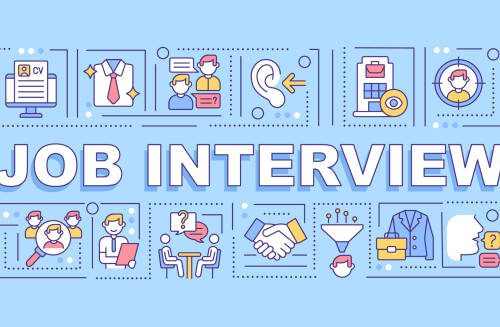Internal Interview Issues: The Complete Journey of My Mock Interview Experience
“So, can you tell us why you want to work for our company?”
“Uhhhhh…”
Awkward silence commences.
And it was going so well too.
This was my great fear going into this interview… The source of all my nerves… The reason for the sleepless night before. An unmarked mock job interview may only be an unmarked mock, but it was still a job interview. The trepidation was very real. Some respite came in that doing poorly in this interview would mean more blog material and more learning for future interviews. This blog post is structured using the Gibbs’ reflective cycle (1988:49) in processing what happened and what I can do in response.

An Interview Experience
Preparation is key to success, so I set aside considerable time. I selected a ‘real’ job application around which I could compose my answers to the pre-determined questions. Choosing a junior video editor position at British esports organisation Tundra Esports, I quickly got to work analysing the application. I found that the autobiographical and strength-based questions were straightforward. They did not require as much depth, although a present->past->future structure was useful for the ever-so-simple-yet-difficult “tell me about yourself.” Tips from Indeed (2022) and Prospects (2021) in dissecting Tundra’s application. I used the STAR (Situation, Task, Action, Result) method advocated in the Interview Skills lecture. STAR structured my competency-based responses where details could be more easily extracted from my memories of experiences to discuss. Regarding body language, Johnstone (1994:58) emphasised the need to maintain eye contact, which can help disguise anxiety and suggests confidence.

Meanwhile, the anxiety and nervousness of being interviewed still loomed overhead. Old memories of past interviews resurfaced, including another mock held during high school where I had no real preparation, finishing the interview after two-three failed questions. I also found myself imagining being in a boardroom with student interviewers glaring at me from across a table as I stuttered and paused my way through hazy recollections of my preparations. Researching the job interview process often yielded more depressing and obstructive results than confidence-giving and helpful, such as interview anxiety leading to poorer performance (Feiler and Powell, 2013:16). Over-preparation, to the point where my responses became too long-winded and muddled, also hindered me. Producing summarised bullet point versions of these paragraphs seemed too little too late. Due to scheduling conflicts, the mock interview was postponed for a week, extending my preparation time, but also dragging out the sense of trepidation.

Thursday 9th February. The day of dread had finally come… And the interview turned out to be nowhere near as bad as I feared. Because it was just between groups of students, the process was quite casual, just like any other typical conversation between classmates. There was no boardroom table. No glaring. Maybe one stutter somewhere in the middle. My answers were clear and concise, frequently using the STAR method with comprehensive examples drawn from past experiences. At first, I struggled to follow Johnstone’s eye-contact advice. But soon, I improvised a strategy of continuously switching my attention between each of the three other students anytime eye contact was about to break, successfully resolving this issue. Finally, I rounded off the interview by recalling some memorised esports industry research, e.g., engagement, promotion and technological innovation being key to esports sector growth (Ukie, 2020:35), that I hoped would impress any real Tundra interviewers.

The resulting constructive criticism provided the interviewers’ perspective of the experience. The panel observed that I was well-prepared, with confident presentation, essential skills demonstrated, and sound examples given of past experiences. No one seemed to think that anxiety was problematic for me. A negative was that I came off too self-critical in one question, which can be a deal-breaker communication-wise (l’Anson, 2014:178). I can see where they are coming from but do not fully agree as we seem to differ on how to approach making a weakness not look bad. The feedback also said that I did not show “dedication to the company”. In my defence, I had prepared answers that better covered Tundra Esports, but was never asked the corresponding questions. After all, both the Work-Based Learning classes and my lesson from the last blog post about phoning companies had made it very clear that an interviewee must prove their passion to the employers for the job they seek. Nevertheless, when compared to the other interviewees’ ability to demonstrate this dedication and background knowledge, I think I could have done better in meeting this requirement.

Conclusions
Having reflected on the interview process, I think that it generally went quite well. At the preparation stage, I was able to build a strong set of responses. Yet, I have also recognised that job interviews may always have that aura of anxiety for me. Whilst my performance was well-received by my peers, improvements have been identified that may help combat anxiety and too much self-criticism. For example, I think a renewed approach to my self-presentation will help me be more confident across the interview process. Paulhus et al. (2013:2043) splits “self-presentation” into two tactical sets: self-promotion, which involves self-enhancement and self-praise, and integration, which involves humour, smiling and tactical modesty. Their article breaks down each of these elements, so may help in future preparation.

For future job interviews, I expect my anxiety will remain high. The real deal will be much less casual and without a strict list of questions to prepare answers for. As part of my self-presentation strategy, I will prepare for other potential questions well in advance as practice makes perfect. Possibilities include “What kind of people do you want to work with?” (Lock, 1996:220) and “What are you looking for in your next job?” (Fry, 2016:159). Additionally, further editing of my responses needs to find a better balance between discussing weaknesses and not being self-critical. I am confident that these actions will depict me as the most viable candidate for employers.
Bibliography
Feiler, Amanda and Powell, Deborah. (2013) ‘Interview Anxiety Across the Sexes: Support for the Sex-linked Anxiety Coping Theory’ Personality and Individual Differences, Vol. 54, No. 1, pp. 12-17.
Fry, Ron. (2016) 101 Great Answers to the Toughest Interview Questions – 25th Anniversary Edition. Wayne, New Jersey: Career Press.
Gibbs, Graham. (1988) Learning by Doing: A Guide to Teaching and Learning Methods. Oxford: Oxford Polytechnic.
Indeed. (2022) How to Use the STAR Interview Technique in Interviews, Available at: https://uk.indeed.com/career-advice/interviewing/star-technique (Accessed: 1 February 2023).
Johnstone, Judith. (1994) How To Pass That Interview, Second Edition, Plymouth: How To Books Ltd.
L’Anson, Jeremy. (2014) You’re Hired! Total Job Search: How to Find and Secure Your Dream Job, Second Edition, Bath: Trotman Publishing.
Lock, Robert. (1996) Career Planning Guide: Job Search, Book III, Third Edition, Pacific Grove, California: Brooks/Cole Publishing Company.
Paulhus, Delroy, Westlake, Bryce, Calvez, Stryker and Harms, Peter. (2013) ‘Self-Presentation Style in Job Interviews: The Role of Personality and Culture’ Journal of Applied Social Psychology, Vol. 43, No. 10, pp. 2042-2059.
Prospects. (2021) How to Prepare for an Interview, Available at: https://www.prospects.ac.uk/careers-advice/interview-tips/how-to-prepare-for-an-interview (Accessed 1 February 2023)
Ukie. (2020) The Value of Esports in the UK, Available at: https://ukie.org.uk/download/4myj6wt9mv38c6vt38xfx3aq4e/0 (Accessed: 7 February 2023)
Simulated Interviews
You May Also Like

Job Interviews: Selling Yourself For A Pay Cheque
24 February 2023
Interview a New You! – Becoming an Interview Guru
24 February 2023
